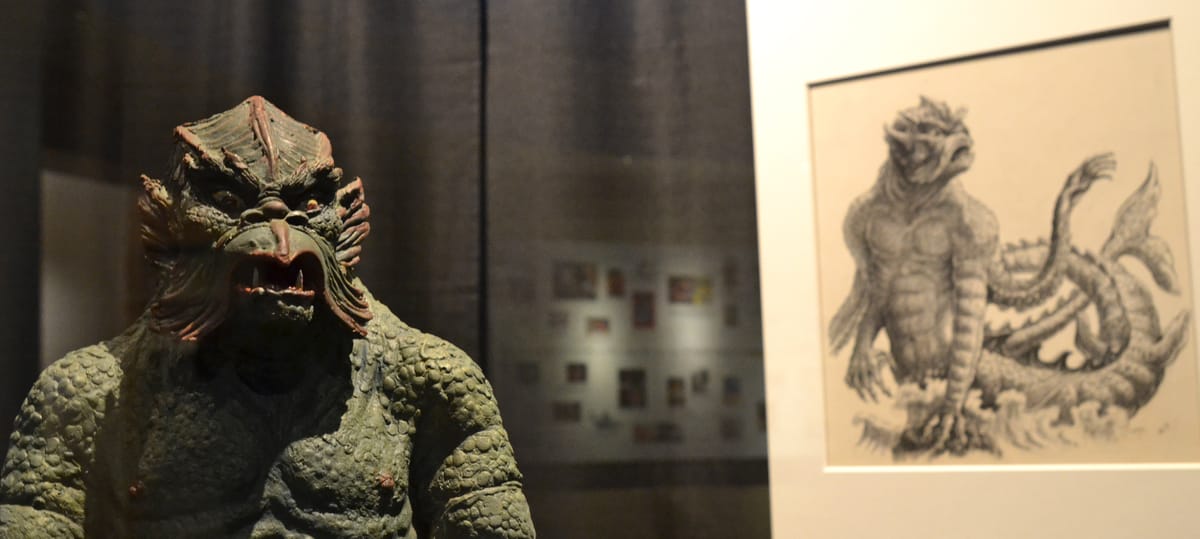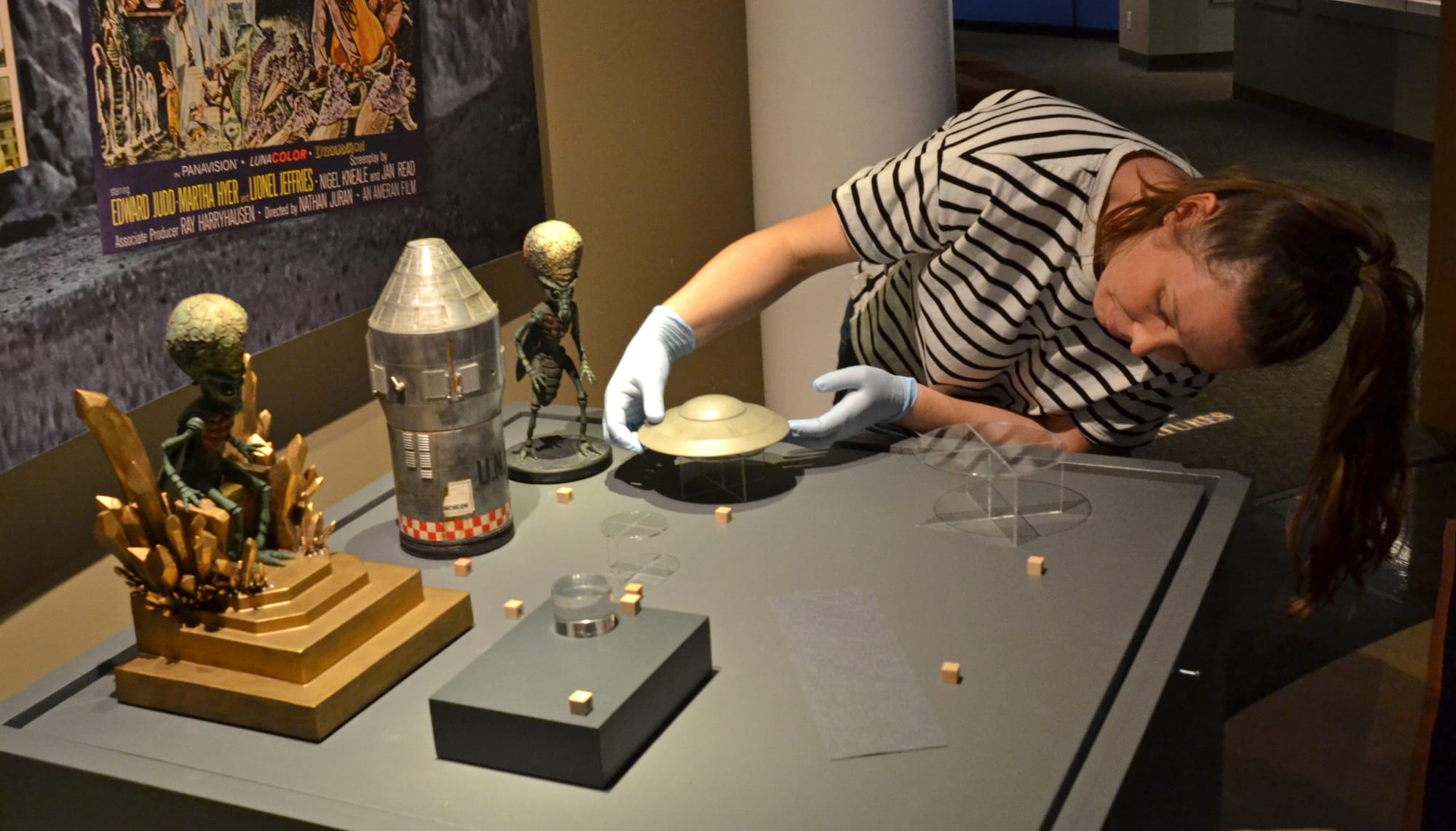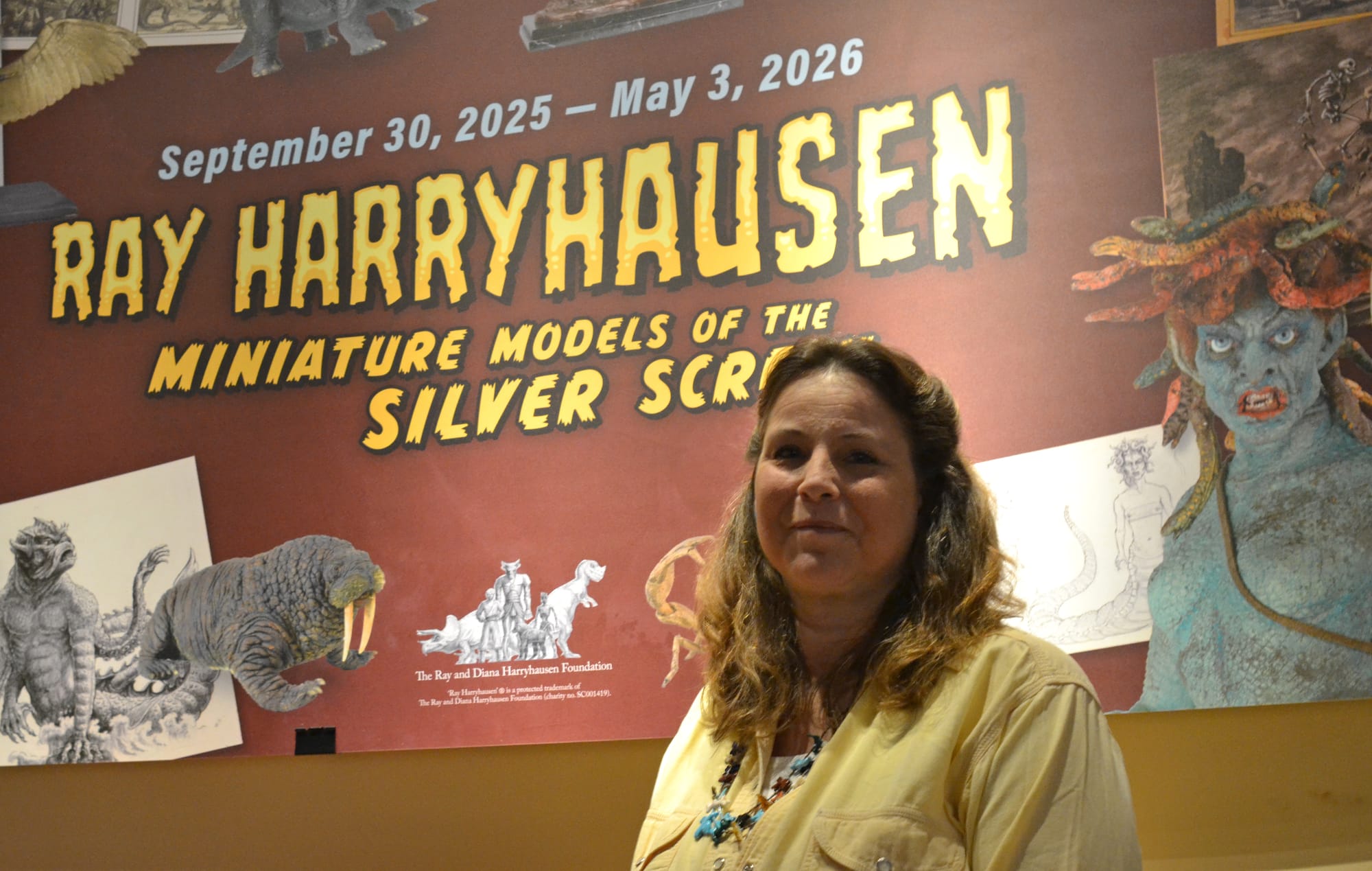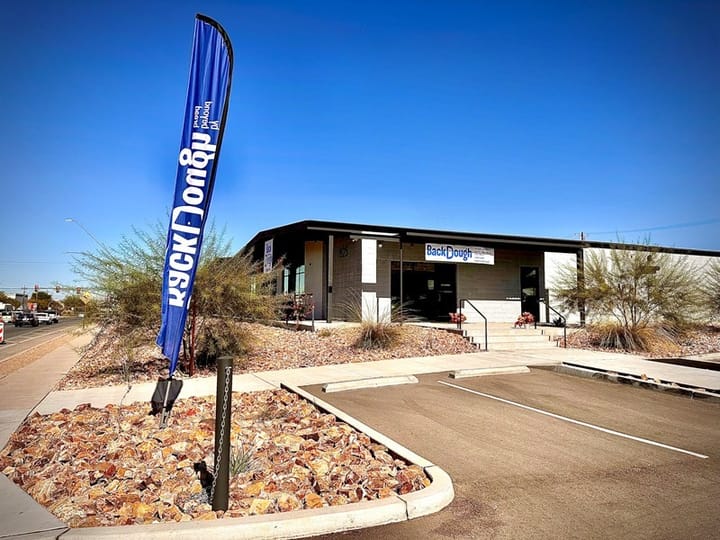Miniature movie monsters take over Tucson
Tucson’s Mini Time Machine Museum is showcasing Ray Harryhausen’s original stop-motion models, sketches, and film artifacts.

The legendary creatures of Ray Harryhausen’s stop-motion films have arrived in Tucson, as The Mini Time Machine Museum of Miniatures showcases the filmmaker’s original models, sketches and film artifacts.
The “Miniature Models of the Silver Screen” exhibit includes memorabilia from the films “Clash of the Titans,” “Jason and the Argonauts” and more. It will be on display through May 3.
The collection of miniatures, curated by the Ray and Diana Harryhausen Foundation, originally hails from Edinburgh, Scotland.
Visitors to the exhibition can experience Harryhausen’s full creative process through his sketches, original artworks, film paraphernalia and archival footage. His creative contributions to animation and special effects, as well as the development of Dynamation, played a pivotal role in shaping stop-motion cinema.
“I think he wanted to inspire young people to realize their dreams if they were in films,” said Ray Harryhausen’s daughter, Vanessa Harryhausen.

She said her father’s own inspiration came from special effects creator and stop-motion animator Willis O’Brien.
“When he went and saw ‘King Kong,’ (O’Brien’s) first film, that inspired him to become a preeminent animator,” Vanessa Harryhausen said.
Ray Harryhausen’s work as a technician in film began alongside O’Brien in the making of 1949’s “Mighty Joe Young,” the first major film he animated and created miniature armature models for.
Later in his career, Harryhausen pioneered Dynamation, a technique used to combine miniature models with film sets. Earlier films, like “King Kong,” were created using a combination of techniques to incorporate stop motion within scenes.
“His Dynamation technique allowed him to work essentially by himself using preexisting live-action footage, sandwiching his creatures in to create that illusion of interaction between creatures and human actors,” said Connor Heaney, collections manager of the Ray and Diana Harryhausen Foundation.
Hailed as one of the most influential figures in animation and special effects, Harryhausen inspired filmmakers including George Lucas, Tim Burton and Peter Jackson.
Though he was not credited on any of the films he worked on, he was regarded as “cinema’s sole visual effects auteur.”
Many of the miniature armatures used in Harryhausen’s films still stand today, thanks to minor restoration and preservation techniques that have kept them looking much as they did on set, Heaney said.

One example, the Hydra model from the 1962 film “Jason and the Argonauts,” is 65 years old and made of latex, resin and metal.
“It feels fresh; it’s not gone brittle yet,” Heaney said.
Other models did not fare as well, as the latex used to build them was not consistent from model to model.
“It really was the luck of the draw when you bought a batch of latex; it’s organic, you have no idea what the future properties are,” Heaney said.
After they served their primary purpose in film scenes, Harryhausen kept the models.
“No one at the time was thinking, ‘Oh, these would look good in a museum in 60 years,’ but it was really, ‘Let’s hope they last the duration of the film,’” Heaney said, adding that Harryhausen, who worked alone to ensure quality and avoid distractions, spent more than 16 months completing the stop-motion animation process.
Trevor Gribble is a journalism major at the University of Arizona and Tucson Spotlight intern. Contact him at tjgribble@arizona.edu.
Tucson Spotlight is a community-based newsroom that provides paid opportunities for students and rising journalists in Southern Arizona. Please consider supporting our work with a tax-deductible donation.



